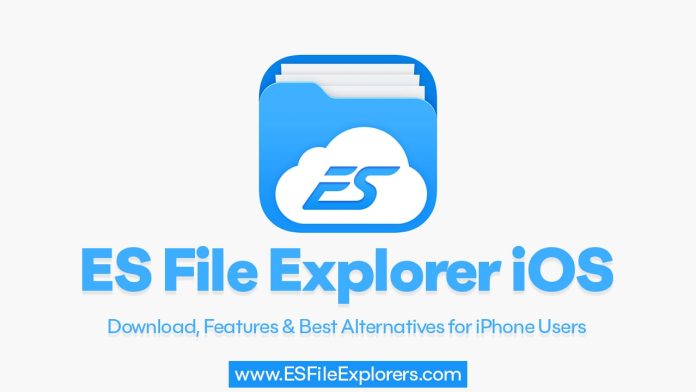ES File Explorer—well known on Android for its advanced file‐management tools—is also available for iOS devices such as iPhone and iPad. Because iOS works quite differently from Android, this iOS version has been adapted. In this article, you’ll find what the iOS version offers, how to get it, and good alternative apps.

Search Intent and Core User Questions
When people search for “ES File Explorer iOS”, they typically want two kinds of information: transactional (can I download it?) and informational (what does it do?). They may want to:
- Find and download the app on iPhone or iPad.
- Understand what the iOS version features compared to its Android counterpart.
- Find alternative file‐manager apps on iOS that offer advanced features like network/cloud access.
And they’re likely asking: - Is the official ES File Explorer available for iOS?
- Where can I download it for an iPhone?
- What are the best alternatives to it for iOS?
- Does the iOS version support cloud and network storage?
- How does it compare to the built‑in iOS “Files” app?
ES File Explorer iOS: Key Features
The version of ES File Explorer iOS aims to give users strong tools for managing both local files on the device and those on networks or in the cloud. Here are some notable functions:
File Management: You can create folders, rename files, move or delete files and directories. The app allows sorting by name, date or size.
Network & Cloud Access: The app supports remote services such as SMB, FTP, WebDAV. It also supports major cloud storage services like Google Drive, OneDrive, Dropbox.
Media & Documents: A built‑in audio/video player is included (with options like double‑speed playback and background play). The app also includes a PDF editor and a code editor that supports many code formats.
Compression: The ability to compress and uncompress ZIP, RAR and 7Z files is present.
Transfer: WiFi‑based transmission is supported so you can move files between mobile device and computer.
Privacy / Safety: Functions like application‑lock (to protect data) and a Recycle Bin (to prevent accidental file deletion) are included.
Because of features like the built‐in code editor and advanced network access (SMB, FTP, WebDAV), this iOS version can appeal especially to professionals or coders using Apple devices.
Availability and Installation
Yes — the official ES File Explorer app is listed on the Apple App Store. For example, one version requires iOS 12.0 or later.
You can search for it on your iPhone or iPad in the App Store, then install the free version and optionally purchase in‑app upgrades (for example, to remove ads or unlock full advanced features).
However, a key limitation arises: because of iOS sandboxing and security restrictions, the app cannot access the device’s root filesystem like it might on Android. On iOS it largely manages files within its own app space or files and folders exposed via iOS’s public file‐sharing mechanisms, cloud services, and network connections. So while powerful, it cannot do everything that Android version might.
It’s also wise to check compatibility (which iOS version your device uses) and read reviews about in‑app purchases and privacy. There have been some warnings about the app’s history.
Alternative File Manager Apps for iOS
Even though ES File Explorer for iOS offers many features, the competition among file manager apps is strong. Depending on what you need (cloud focus, network access, simplicity, interface) you may want alternatives. Here are some:
- Documents by Readdle: A well‑regarded all‑in‑one file manager, document viewer, and media player. It has strong cloud integration and good PDF annotation tools.
- Total files: Focuses on comprehensive file management, wide support for different clouds, and has a strong PDF reader.
- FE File Explorer Pro: Excellent if you need strong network file access (SMB, FTP, WebDAV) for local network or corporate server access.
- Amerigo File Manager: Known for its private browsing and download manager features, letting users download and manage media files directly within the app.
Also remember: the built‑in Files app in iOS has improved a lot over time. It supports basic file browsing, search, cloud service integration (iCloud Drive, Dropbox, etc.). But it lacks some of the advanced features (code editor, deep network client support) that the third‑party apps offer.
Summary
If you are using an iPhone or iPad and want to use ES File Explorer, yes—the iOS version exists and you can install it from the App Store. It provides many advanced features like network/cloud support, media & code editing, compression tools that go beyond what the built‑in Files app offers. But keep in mind the limitations (due to iOS security) and check costs (in‑app purchases). If your needs lean toward cloud access, network drives, or code editing, consider the alternatives above. For most users with moderate needs, the built‑in Files app might suffice.















